Repeat after me: “Prosecco is not just for brunch. Prosecco is not just for mimosas.” Repeat as many times as necessary until it sinks in. I’ve had a love-hate relationship with Prosecco for a minute now, but we’ve recently had a few come to Jesus moments. We now understand each other and we certainly appreciate each other more. And as you’ll see with my pairing further down, Prosecco is such a versatile pairing wine. You know what happened? What changed the tide for me? I stopped drinking the highly marketed stuff with the light blue label on the bottle. I know it’s popular and it seems to be everywhere, but I just was not a fan. It’s fine in a mimosa I guess, but I generally like my bubbly on its own. It was one of those wines that I always saw by the glass and continued to order, but I continued to be like “meh.” So I threw in the towel and stopped drinking any Prosecco.
But then a few years ago, someone was featuring a certain Prosecco producer on a Twitter chat and I thought ‘why not?’ I found a bottle, participated in the chat, and guess what? Mind blown! Really! Where the heck had this Prosecco been?! That was several years ago and I now wisely understand so much more about Prosecco and that there are a lot of good ones out there.
Some Prosecco Background
Part of my Prosecco evolution was understanding the different quality levels of Prosecco.
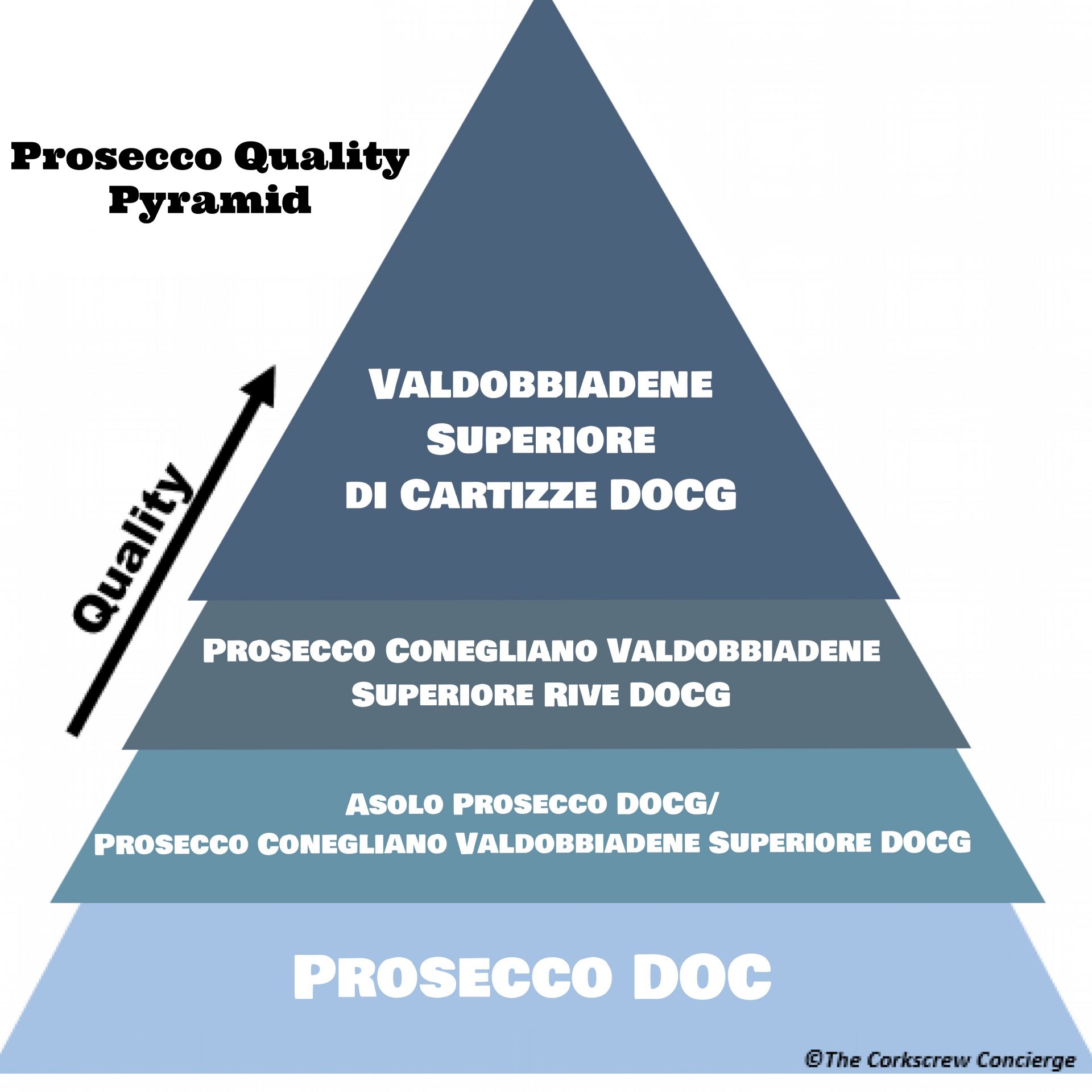
The wine I had during that telling Twitter chat was a Conegliano Valdobbiadene “DOCG” Prosecco and from that experience, the light bulb went on and the learning really began. That’s when I really began to hone in on the various quality levels of Prosecco and to understand the difference between DOC and DOCG Prosecco. DOC refers to “Denomination of Controlled Origin” while DOCG means “Denomination of Controlled and Guaranteed Origin.” DOC Prosecco is the more common Prosecco and can be produced in nine different provinces spanning the Veneto and Friuli-Venezia Giulia regions. DOCG Prosecco is subject to much more stringent rules and is considered the higher quality designation of the two. These wines come from smaller, more focused sub-regions and are considered “superior” wines. To give you some DOCG perspective, Barolo, Barbaresco, Brunello di Montalcino, and Chianti are all regions with DOCG designation.
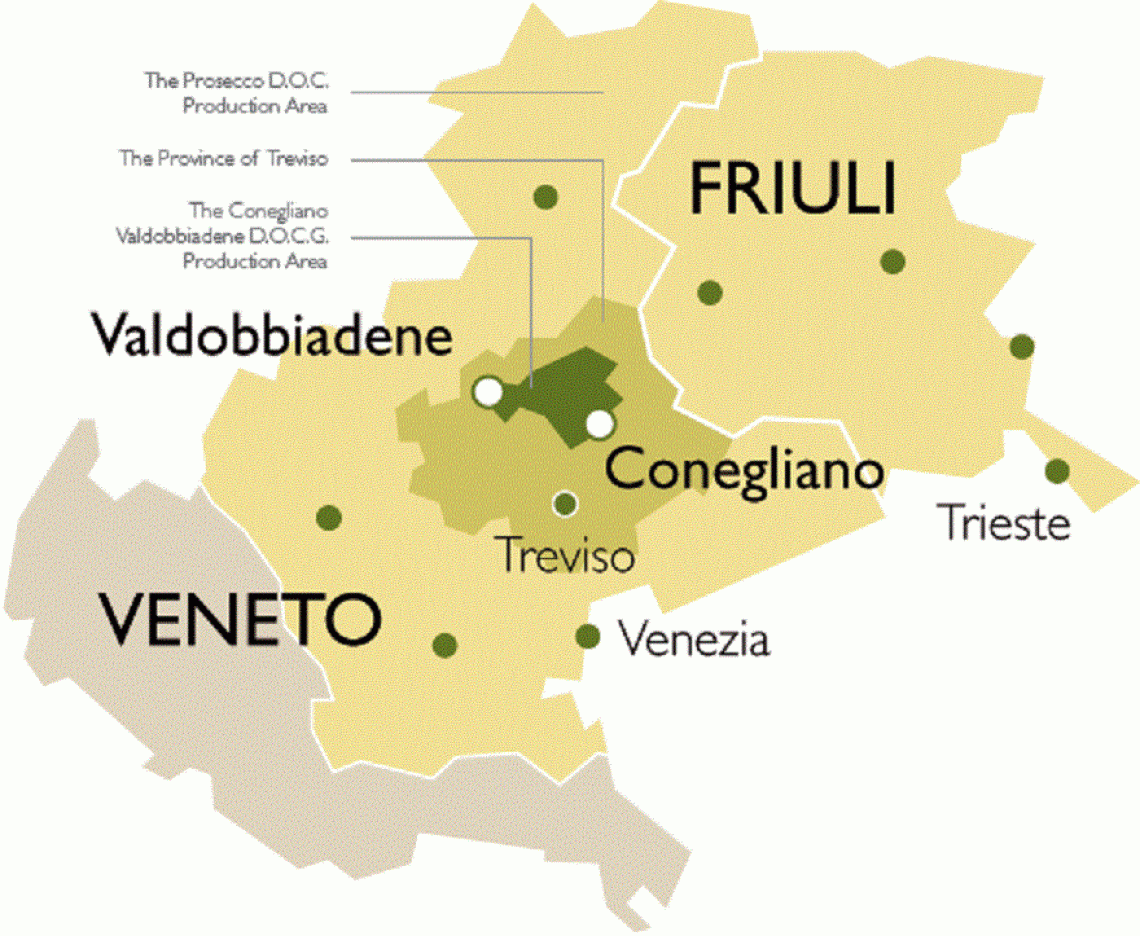
Taking a closer look at the Prosecco DOCGs, Conegliano-Valdobbiadene and Asolo are both hillside regions that produce quality and affordable Prosecco at the next level above DOC Prosecco. After that is Rive, which comes from specific vineyards within Conegliano-Valdobbiadene and represents another level up. And at the top of the quality pyramid are the ethereal wines of Cartizze, which I’ve previously written about. (Link) Now don’t get me wrong, there are certainly some good DOC Proseccos out there, and I drink these wines as well. Many of them (if you drink the right ones) are a great examples of why we love Prosecco – fruit forward, floral, easy-drinking, and easy on the wallet. These are the wines I may drink while at the beach or hanging out by the pool or that I would use in a mimosa. But tasting the best of what the region has to offer really gives you an appreciation for the heights that Prosecco can truly reach.
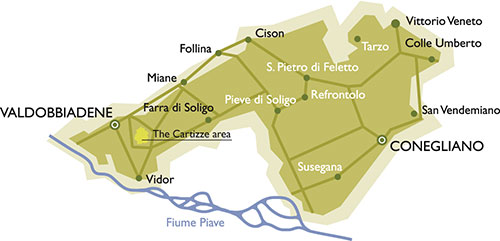
Prosecco is also a nice gateway into sparkling wine in general. Believe it or not, I know people that do not like sparkling wine. Blasphemy I tell you! I always look at them to see if their head will spin around on their neck because obviously something is wrong with them. But Prosecco is a “gentler” sparkler coming in at 3 atmospheres of pressure, compared to champagne which comes in at 5-6 atmospheres of pressure. So for those who think the bubbles are “too strong” I typically point them to Prosecco.
Oh and one more thing – do drink your Prosecco out of a tulip shaped glass, or at least a white wine glass. Typical Champagne flutes rob you of enjoying the beautiful aromatics for which Prosecco is known. Actually, it is these fruity and perfumed floral notes that may make Prosecco seem sweeter than it is. However, most Prosecco is produced in a dry, brut style. Like Champagne and other sparkling wines, Prosecco has a sweetness scale to let you know how much residual sugar (“RS”) to expect in your wine. And FYI, “RS” is the natural grape sugar leftover after a wine completes alcoholic fermentation. It is measured in grams per liter.
- Brut 0–12 g/L RS
- Extra Dry 12–17 g/L RS
- Dry 17–32 g/L RS
- Demi-sec 32–50 g/L RS
So now that I’ve gotten past my bias (and lack of education) I seek out quality Prosecco more and more. So when the folks at Terre di San Venanzio Fortunato reached out and asked if I’d be willing to try their wines, I was certainly interested. This was during a long spell when I hadn’t been accepting any wines because “life” not to mention I was way behind (as usual) in my writing. But since I’m still in my Prosecco discovery phase, I agreed to try their wines.
Terre di San Venanzio Fortunato
Located in the heart of the prosecco hills in Valdobbiadene, Terre di San Venanzio Fortunato is named after one of the most illustrious characters of Valdobbiadene, Venanzio Onorio Clemenziano Fortunato. Born in Valdobbiadene in the sixth century and later known as the Bishop of Poitiers, he was a poet, writer of hymns (some of which are still used today by the Catholic Church), and authored some highly regarded texts on the cultivation of vines and wine. Even after moving away, his dedication to his homeland came through in his verses and writing. Like the bishop, the wines of Terre di San Venanzio Fortunato evoke ties to the special place that is Valdobbiadene. The splendid land, the centuries old traditions, and the “good fortune” of those who live and work in the region come to mind through a glass of their bubbly.
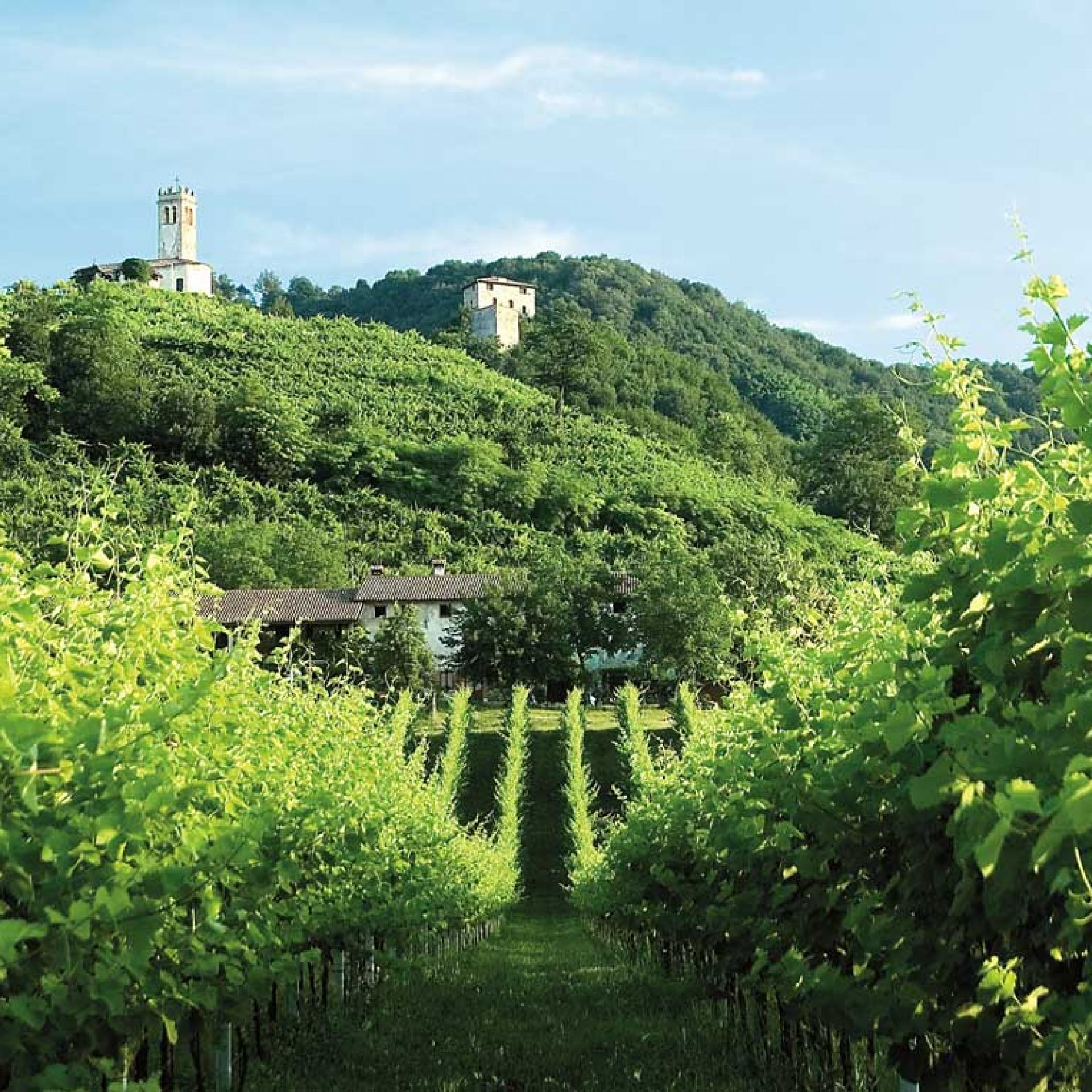
The winery produces a small, yet high-quality wine range of wines with production around 350,000 bottles per year. All of the grapes are hand-picked and immediately pressed to preserve the fragrance and aromas of the wine. No clarifying agents are used in the wines. Instead, they pour off and decant the wine (up to 8 times) to reach a naturally-clarified wine. And to ensure that they preserve the aromatic traits of the wine and are offering the freshest wine possible, they bottle small lots of wine each month. The result is a fresh, fragrant, floral and fruity wine, which ideally should be drunk within a year.
Terre di San Venanzio Fortunato Prosecco has an impressive portfolio of Prosecco wines as well as a few other sparklers. I tasted three of their wines.
Valdobbiadene Prosecco Superiore Brut
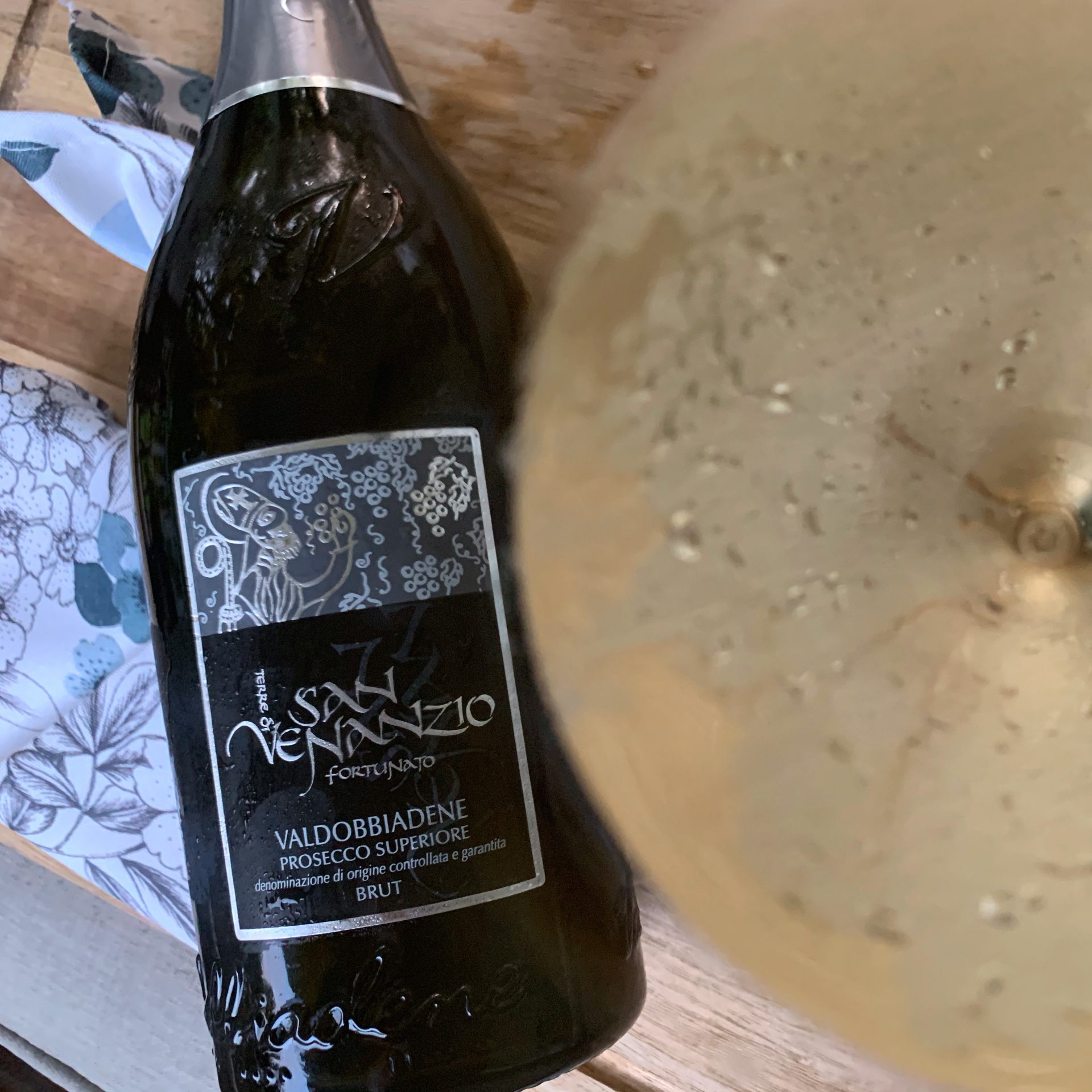
This is one of their driest sparklers (as the “brut” name implies) with 9 g/L of residual sugar. Note that 10 g/L represents 1% of residual sugar in a wine so this one comes in at less than 1%. Most people can’t detect sweetness in wine below 5 g/L and for some it takes a little more. And as a point of reference, regular Coke has 108 g/L – so almost 11% RS. So while I picked up a hint of sweetness in this one, for all intents and purposes, its a dry wine. And it pairs beautifully with so many different things. If you’re looking to have Prosecco with dinner, start with this one. And be sure to see what I paired it with below.
Valdobbiadene Prosecco Superiore Extra Dry
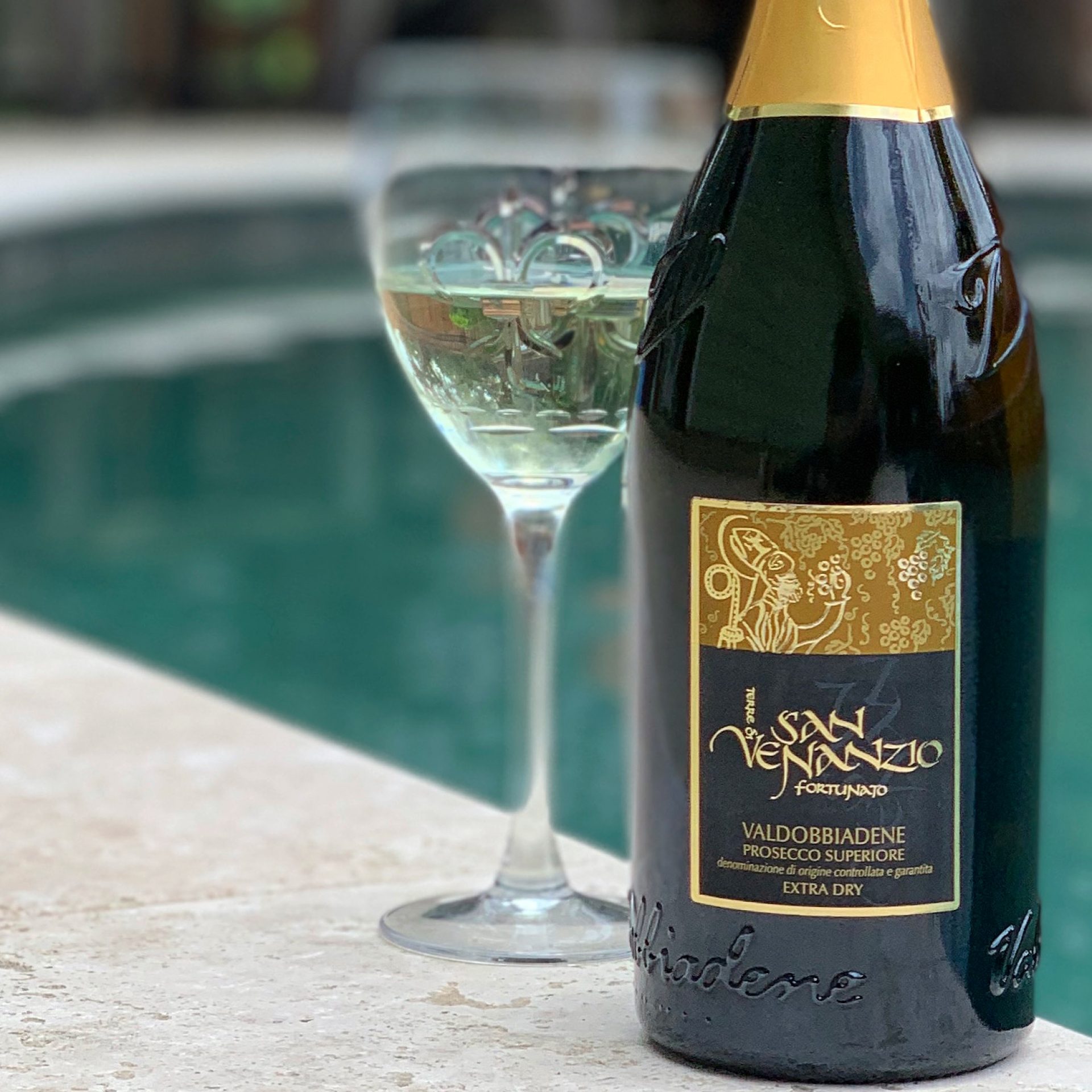
The “Extra Dry” wine has more noticeable sugar in that it comes in at 15 g/L, but still not terribly sweet in the grand scheme of things. This is the most classic version of Valdobbiadene Prosecco and is perfect as an aperitif or on its own. And that’s exactly what I did with mine – drank it on its own in the pool. A hint of jasmine, white peach, and green pear makes this a lovely (and easy to go down) sipper. And with the creamy mousse and lively acidity, each sip keeps you coming back for more.
Valdobbiadene Prosecco Superiore “Fortunato” Dry
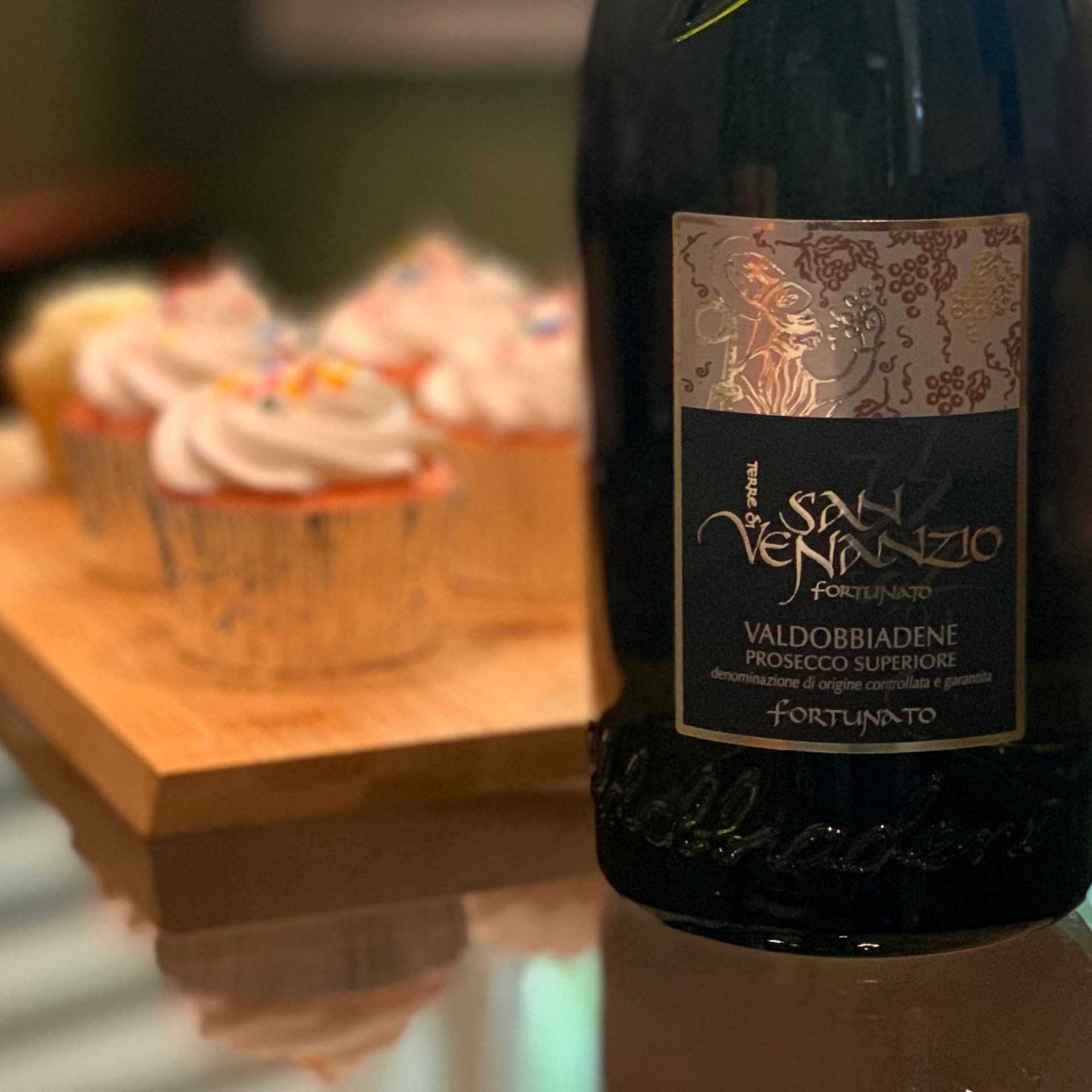
“Dry” is one of those terms that can confuse the heck out of people because “dry” is sweeter than “brut.” Don’t blame me! I didn’t create these terms. So while this one is “dry,” it contains 20 g/L of RS. And if you’re one of those people who thinks you can’t enjoy and appreciate a wine with some sugar (which drives me crazy by the way!) give this one a whirl. A wine like this with its high level of acidity balances the wine and makes it seems lighter than it is. I’m convinced that people that think they don’t like sweeter wines just haven’t had them with the right thing. This one can pair nicely with foods with a little spice or can go the sweet route and team up with dessert. Now I’ll tell you that these cupcakes aren’t what I had in mind. Thing 1 had made cupcakes so I figured, why not? But a better dessert would be a fruit tart or a simple pound cake (sans frosting). With its aromas of peach, pear, green apple, and white flowers, this is one of those wines that helps you to really appreciate Prosecco’s aromatics. And all that sugar? It’s there but so in harmony with the rest of the wine.
Pairing Prosecco
Like champagne, the though-process behind pairing Prosecco is to use it as a palate cleanser between bites. Anything from cheese to poultry, pork, roasted vegetables, shellfish and beyond can par with Prosecco. Additionally, because of its sweeter and more aromatic profile, Prosecco is a natural with many types of Asian cuisines as well as Cajun and Creole cuisines. At the end of the day, Prosecco tends to be a very forgiving, food-friendly sparkling wine option.
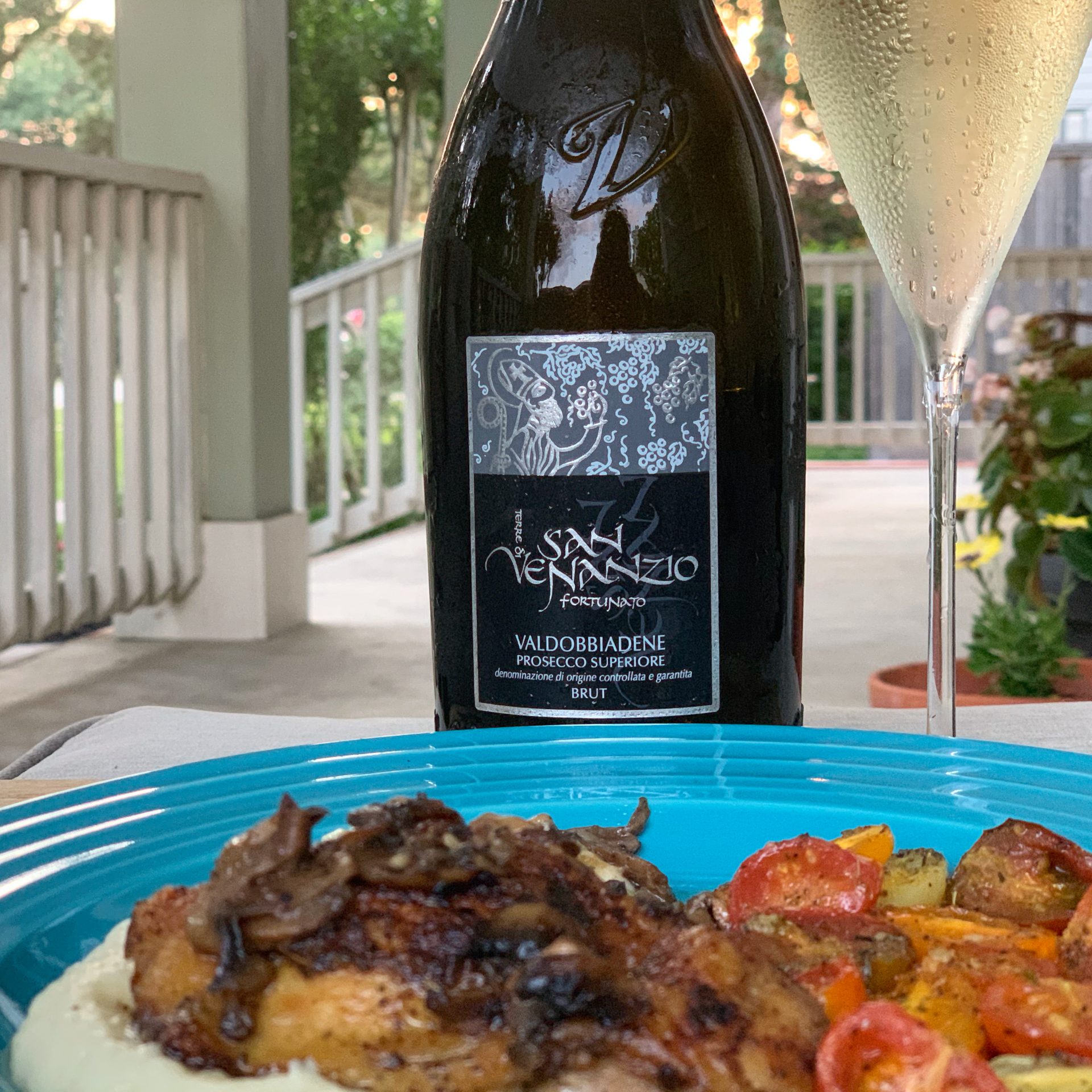
I paired the brut Prosecco with garlic, mushroom chicken. The chicken was served over mashed potatoes and accompanied by herb roasted tomatoes. Just a normal, no frills dinner that can be enjoyed on any day of the week.
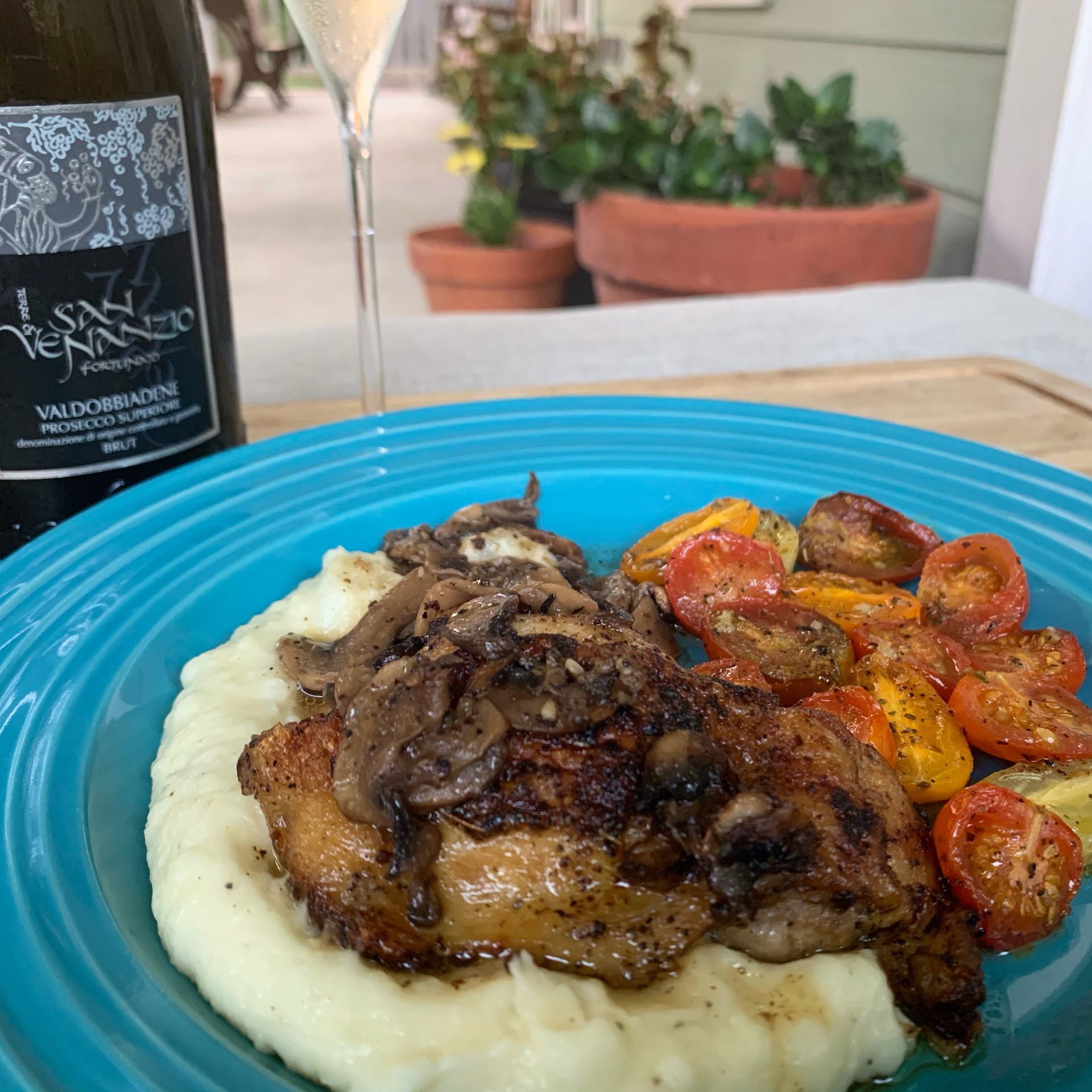
What I liked about this pairing was that the acidity in the wine cut through the richness of the chicken and potatoes. As this pairing shows, Prosecco can go beyond the brunch table. Go ahead and invite it to dinner.
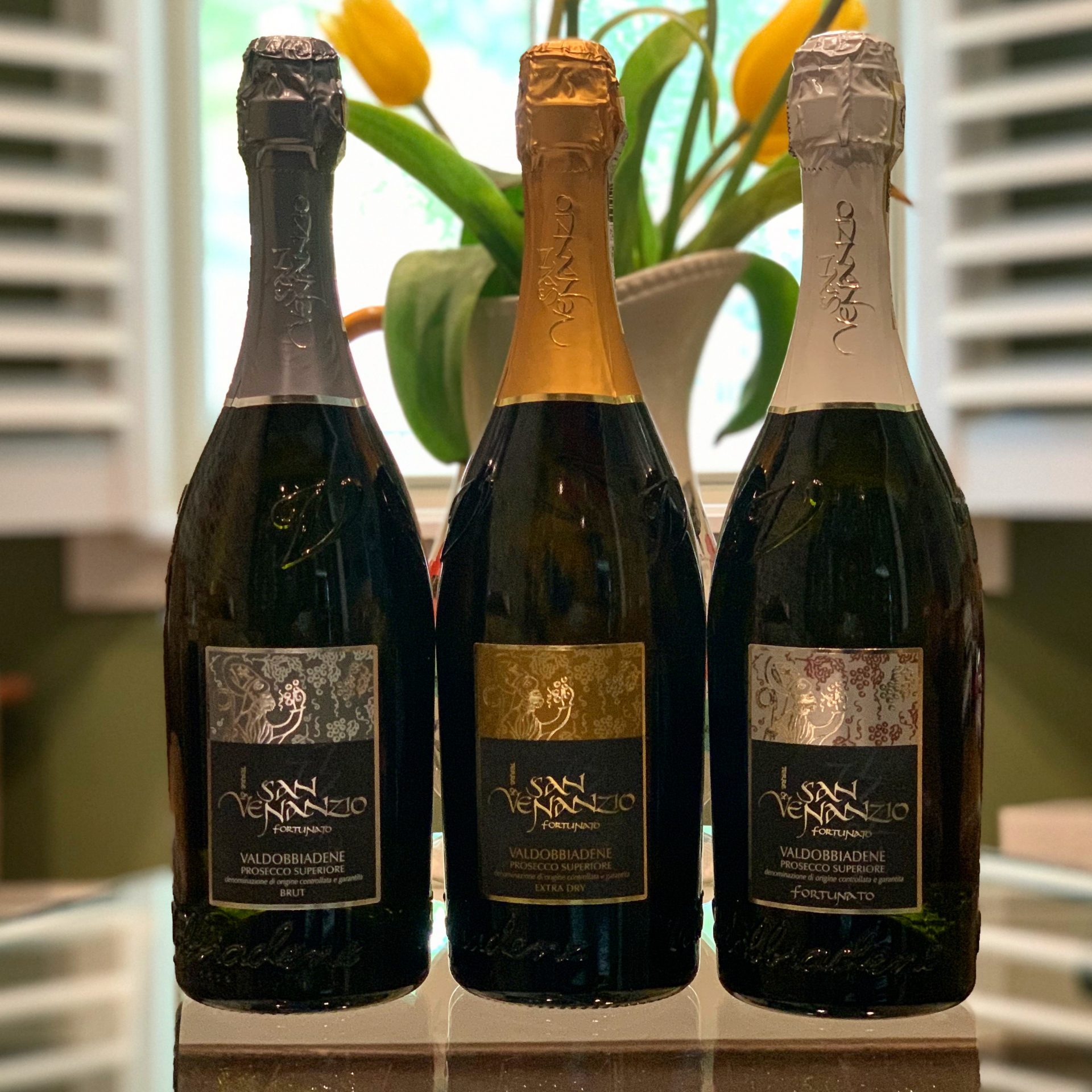
Note: Cover Image Courtesy of Terre di San Venanzio Fortunato

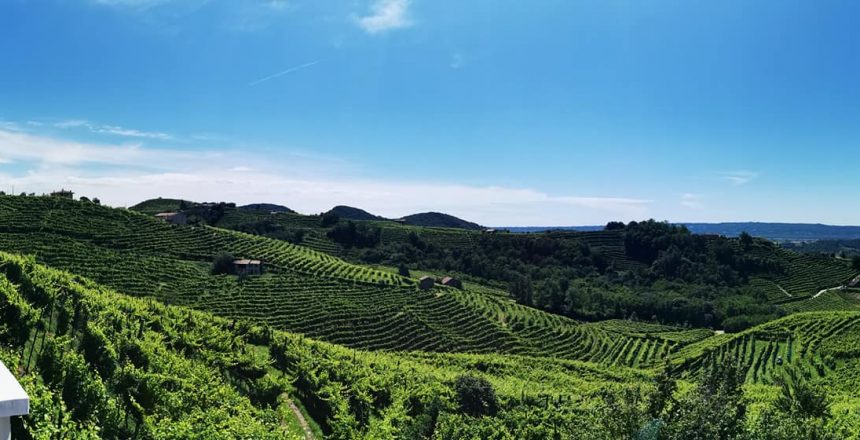
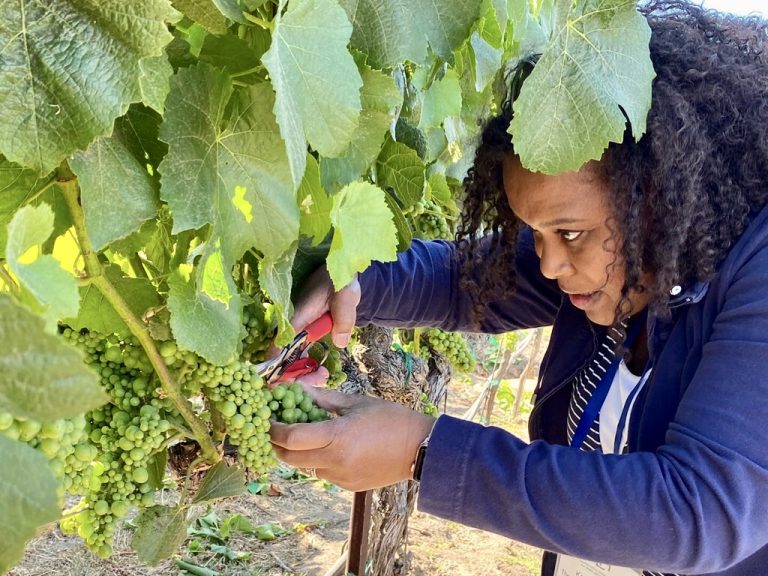
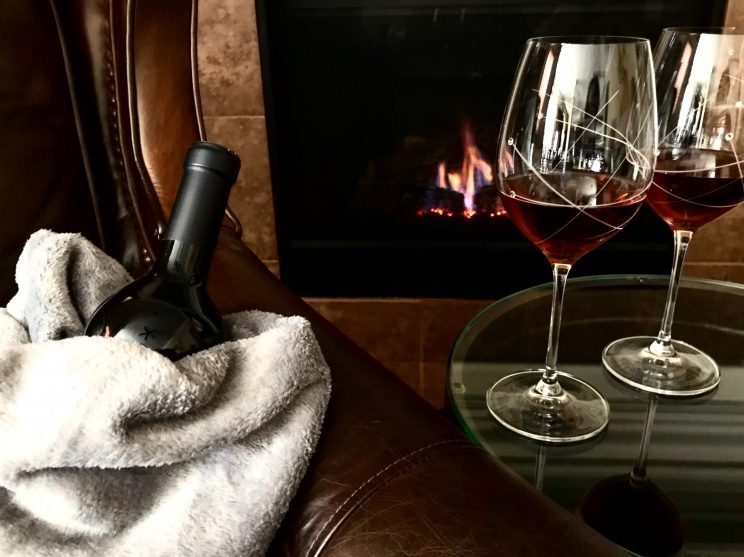
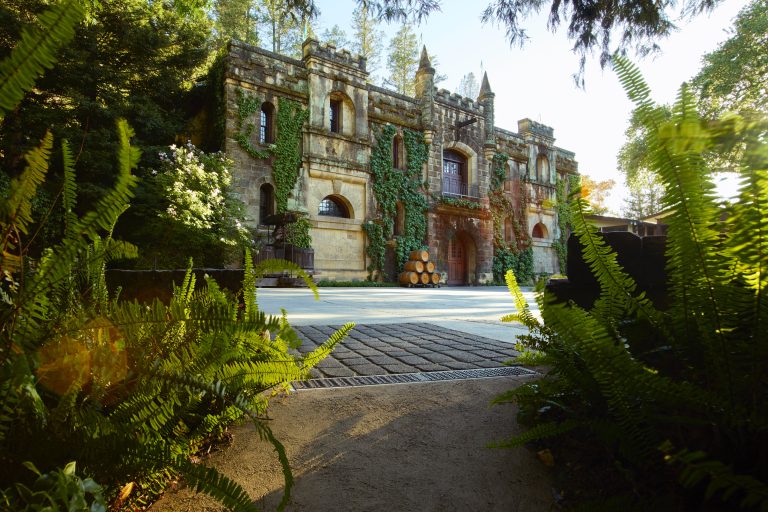

2 Comments
Martin Redmond
•4 years ago
I discovered this Prosecco when I was in Italy several years ago. We picked it up after a long day of hiking in Cinque Terra. It’s still a go to Prosecco for me!
Kat
•4 years ago
Lucky you! These really are some nice examples of Prosecco.